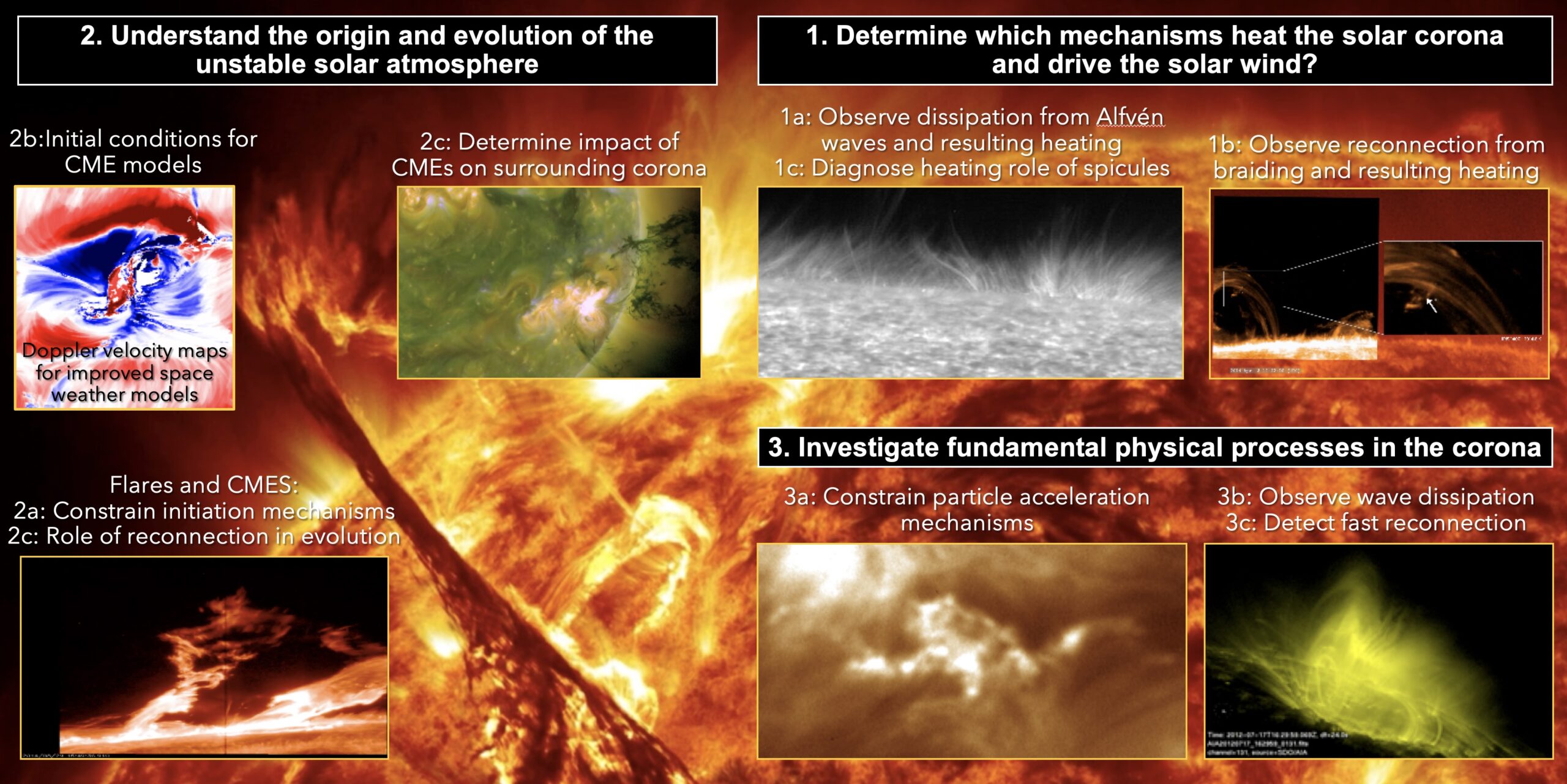Overview
MUSE focuses on the flow of mass and energy in the Sun’s transition region and corona in order to comprehend what heats the corona, and to understand the unstable nature of the solar atmosphere such as coronal mass ejections (CMEs), and flares. This is expressed in three science goals:
- Determine which mechanism(s) heat the solar corona and drive the solar wind
- Understand the origin and evolution of the unstable solar atmosphere
- Investigate fundamental physical plasma processes

While coronal imagers have revealed the bewildering dynamical behavior and fine-scale structuring of coronal loops, flares, and CMEs, the physical processes that dominate these phenomena remain largely invisible to imagers. Recent observations and breakthroughs in numerical modeling indicate a need for very high cadence spectroscopy at sub-arcsecond resolution over a large enough field-of-view to simultaneously capture intensities, velocities, and non-thermal line broadening at both ends of loops or over the full extent of eruptions.
MUSE’s innovative 35-slit design and simultaneous sub-arcsecond imaging will, for the first time, have sufficient temporal resolution to freeze the evolution of CMEs, flares, and magnetic loops with spectral raster scans. The physical processes dominating these phenomena are fundamentally of a multiscale nature. Recent models predict that the processes driving coronal heating and eruptions rapidly and coherently deposit energy or drive dynamics across scales from sub-granular (0.5”) to active region size. Similarly, the plasma response is expected to occur on spatial scales of jets, loops or CMEs, and to be characterized by spatio-temporally coherent behavior on scales MUSE can capture: time scales of ~20s and spatial scales of ~400 km over regions as large as 100 Mm. With current or other pending instruments, we cannot trace such a wide range of spatio-temporal scales. This leaves many issues at the forefront of heliophysics unresolved, including:
- How important are field line braiding or wave dissipation for the coronal energy balance?
- What role do flux ropes play in triggering solar eruptions?
- Which processes cause the acceleration of the energetic particles that affect satellites and radio communications?
MUSE will provide, for the first time, a powerful combination of multi-slit spectra and images of spectral lines formed over a broad range of temperatures in the transition region and corona with raster times as fast as 8 to 12s and spatial scales below 0.5 arcsec. MUSE is virtually guaranteed to have slits at the key locations in an active region and at times essential for understanding triggering of eruptions or reconnection in flares. A key aspect of the MUSE investigation is comparison of observations with numerical models and public release of such models, following the successful IRIS approach.
